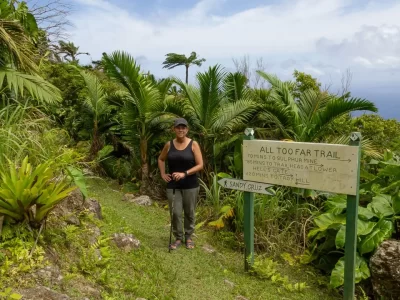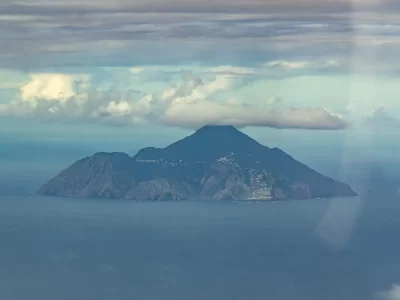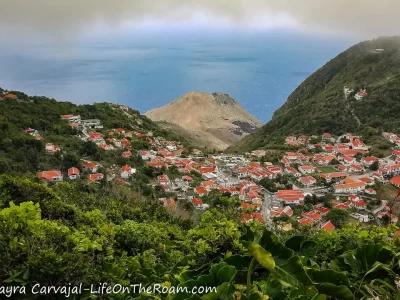“Paradise found” were the first two words that came to my mind when I saw Saba for the first time.
This small island is a great destination if you want to go off the beaten path in the Caribbean. Since it’s tiny and off-the-radar you may wonder: Is it worth visiting Saba? I hope you’ll answer Yes! after reading this post.
Saba (pronounced SAY-bah) is unique, beautiful, and pristine. Here I’ll show you why it was given the title of “The Unspoiled Queen of the Caribbean”.
Disclosure: This post contains some affiliate links. If you make a purchase through those links I will earn a commission at no additional cost to you (zero, nada). To check the full disclaimer, click here.
Table of Contents
Saba Is One of the Least Visited Caribbean Islands
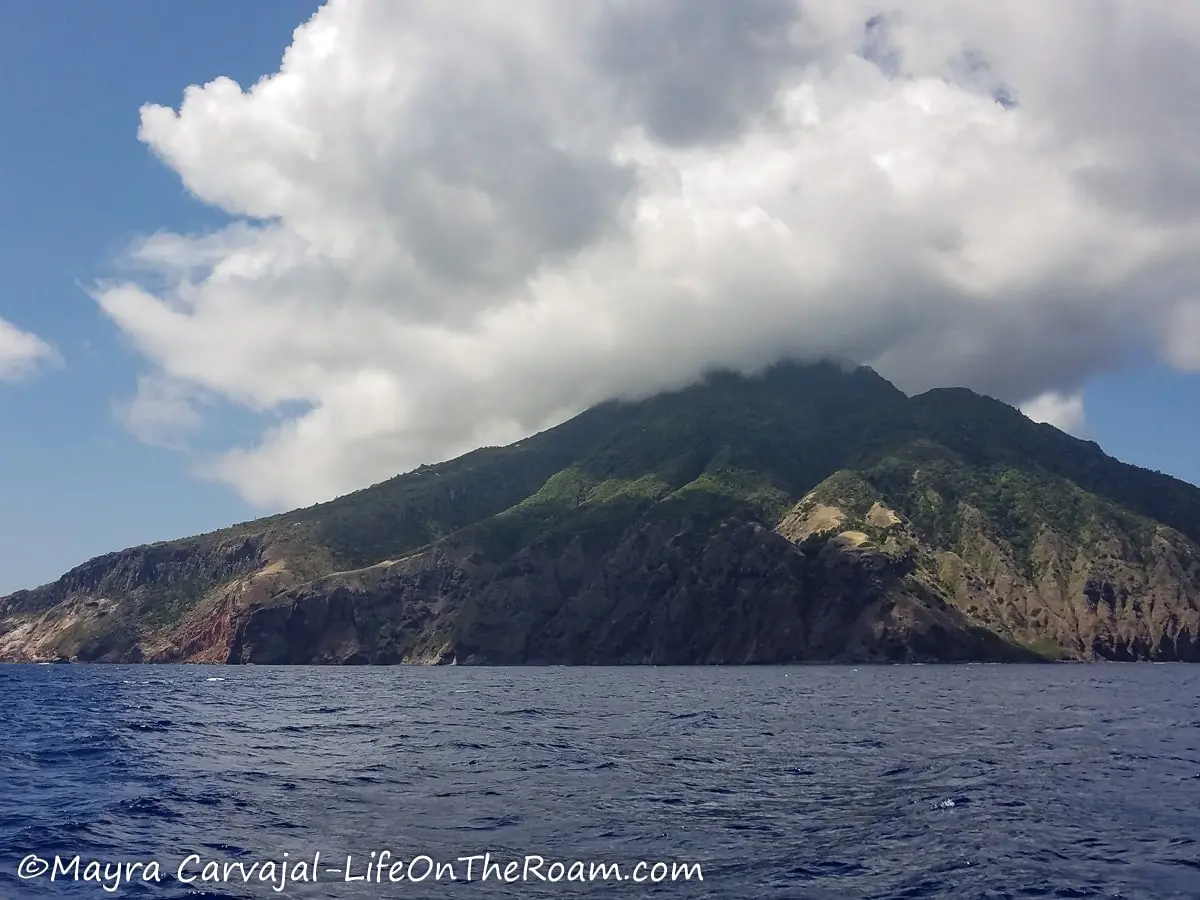
You mention Saba and most people won’t have a clue where it is and have never heard about it. I lived in the Caribbean for several years and I had never heard about Saba or seen it on a regional map. It’s that tiny.
Perhaps because, in addition to its minute size (a grand total of five square miles -13 square kilometres-) no big cruise ships stop here and to fly to this island you have to go through Sint Maarten.
Perhaps because there are no powdery sand beaches lined up with beach chairs and beach bars serving piña coladas, which is the usual image of a Caribbean vacation.
All of the above means no crowds, no traffic jams (there are no traffic lights), and no ships the size of a mall dumping 6,000 people on the port by 7AM.
It doesn’t mean that you’ll get bored here, there are many fun things to do on Saba. It’s just that this island is more about ecotourism and relaxation rather than banana boats and Margaritavilles.
Saba’s Nature Will Blow You Away (and You’ll See Unique Wildlife)
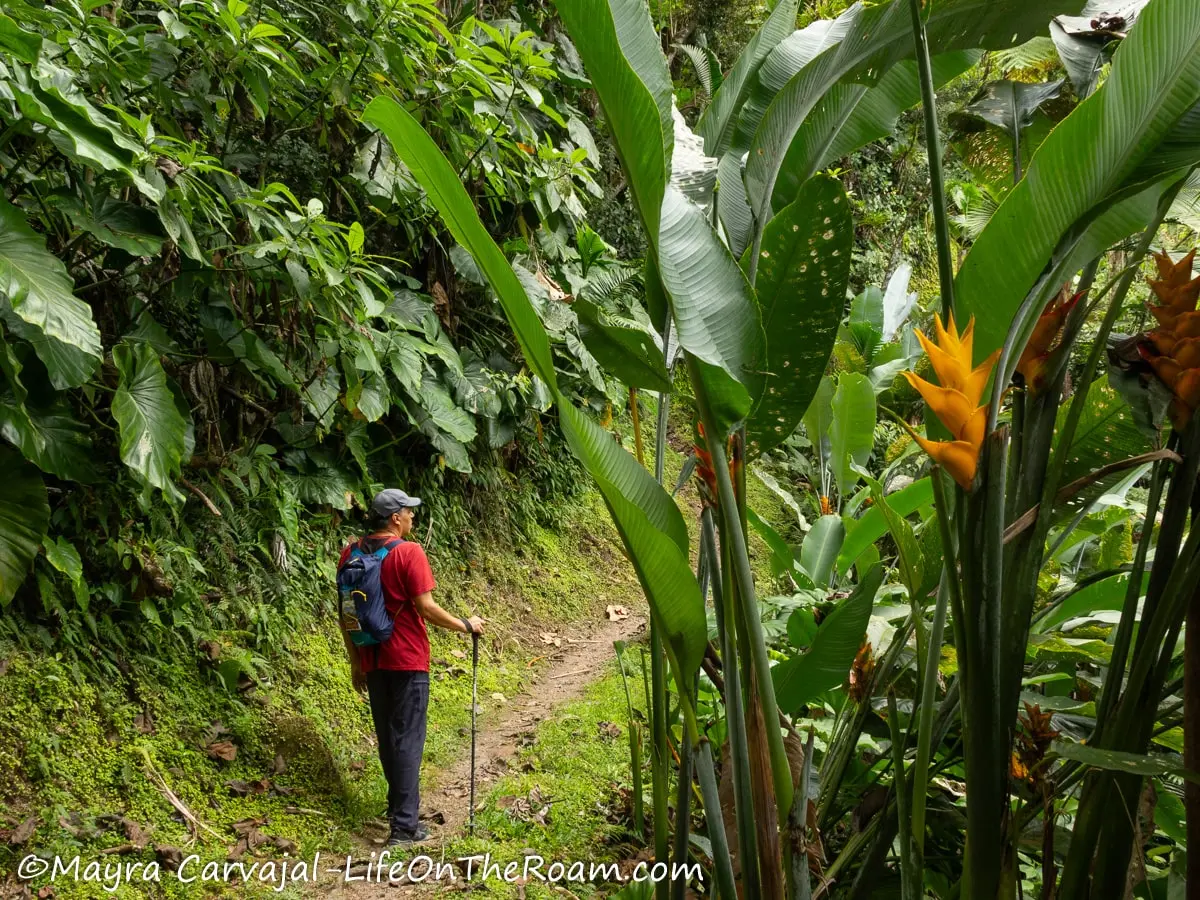
It looks as if all the plants and trees on Saba received a huge dose of fertilizer. The elephant ears along the trails and the road are the size of a huge umbrella. The heliconias are tall and bright, orchids are abundant, and multicolour flowers blossom on the side of the road, gardens, and trails, attracting multicolour birds.
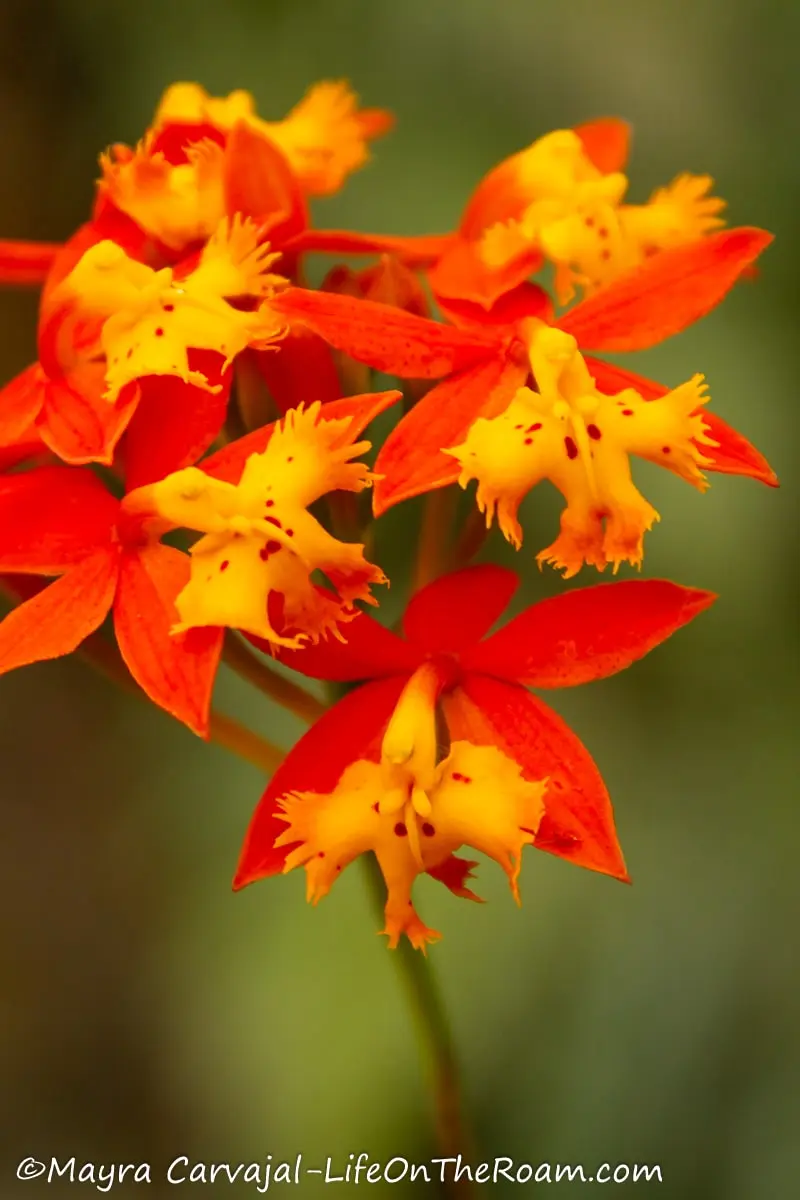

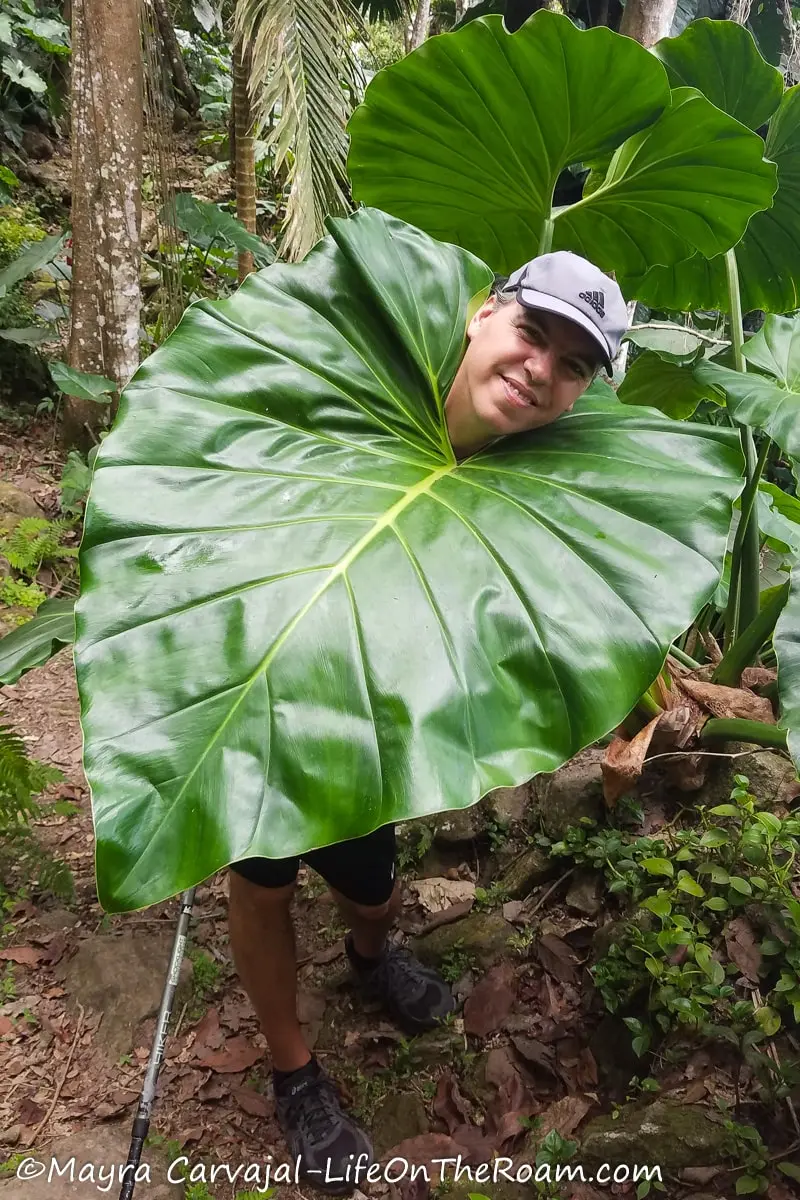
And then you drive less than 10 minutes and you’re surrounded by petrified lava, gravel, and cacti, with seabirds chanting in the background.
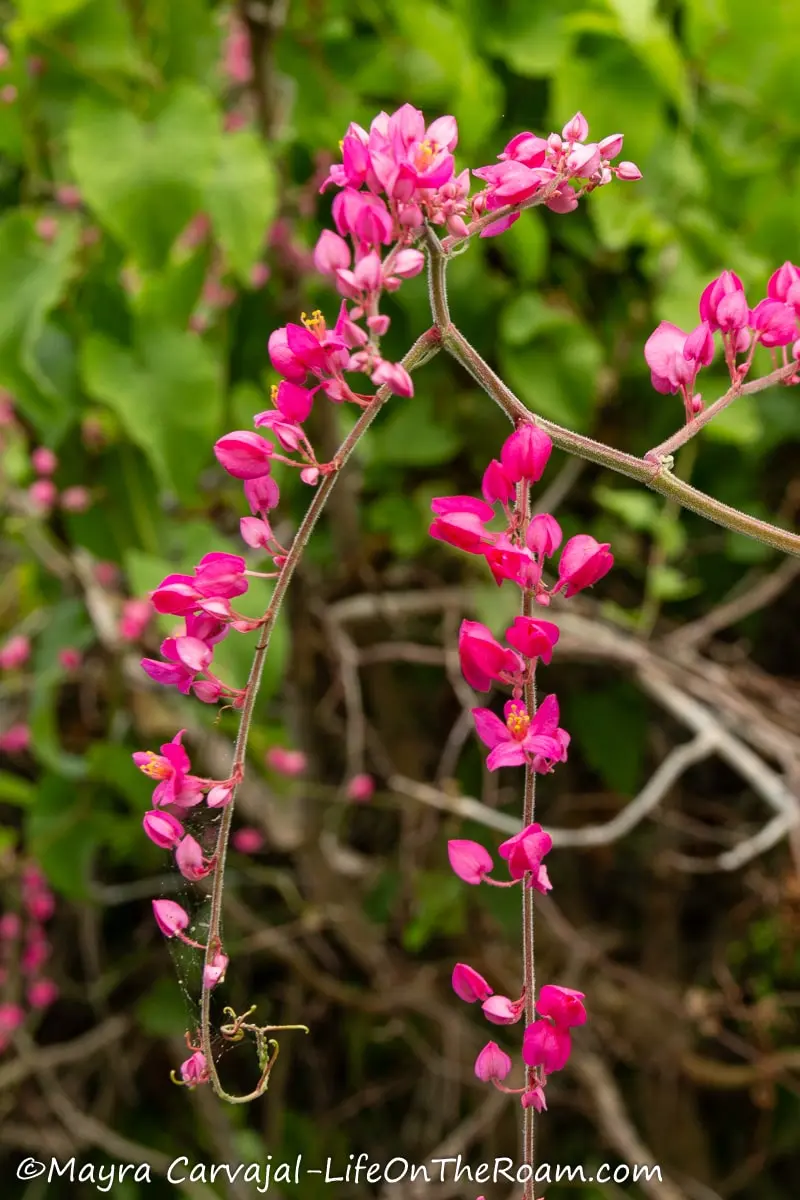
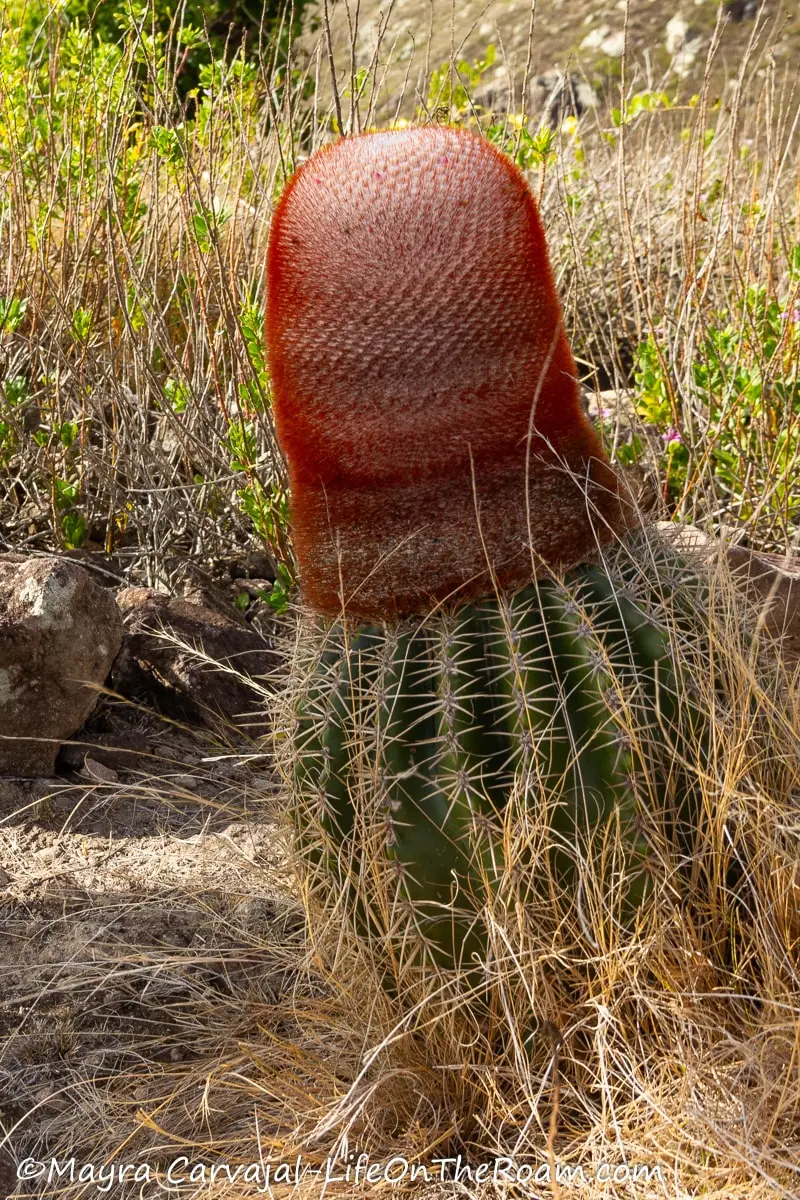
On Saba the change in altitude is so drastic that you can see all types of vegetation in half a day.
The island is also a mecca for scuba divers, where you can spot a rich marine life, and birdwatchers can see more than a hundred species.
If you’re looking to add a new specimen to your wildlife checklist, look for a pretty lizard you won’t see anywhere else in the world: the Saban Anole (Anolis Sabanus).
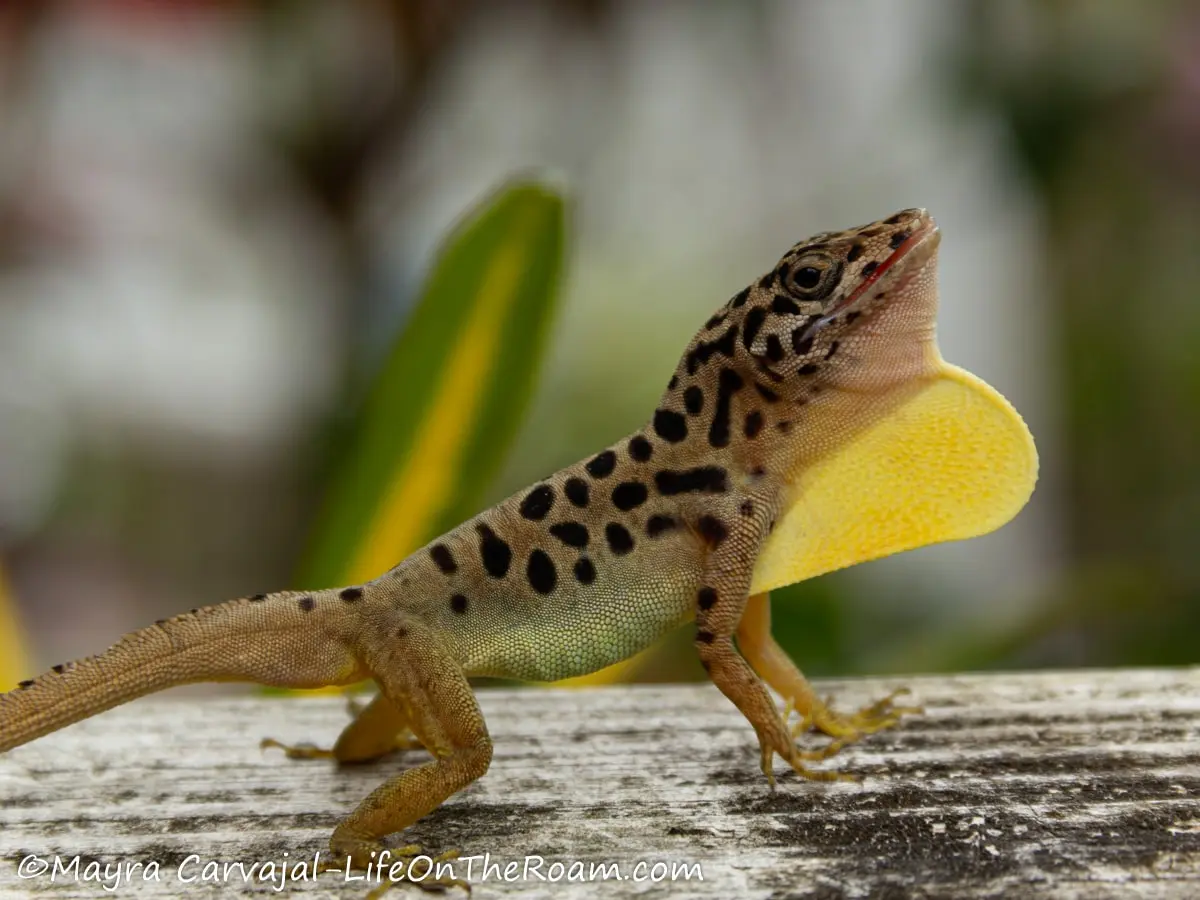
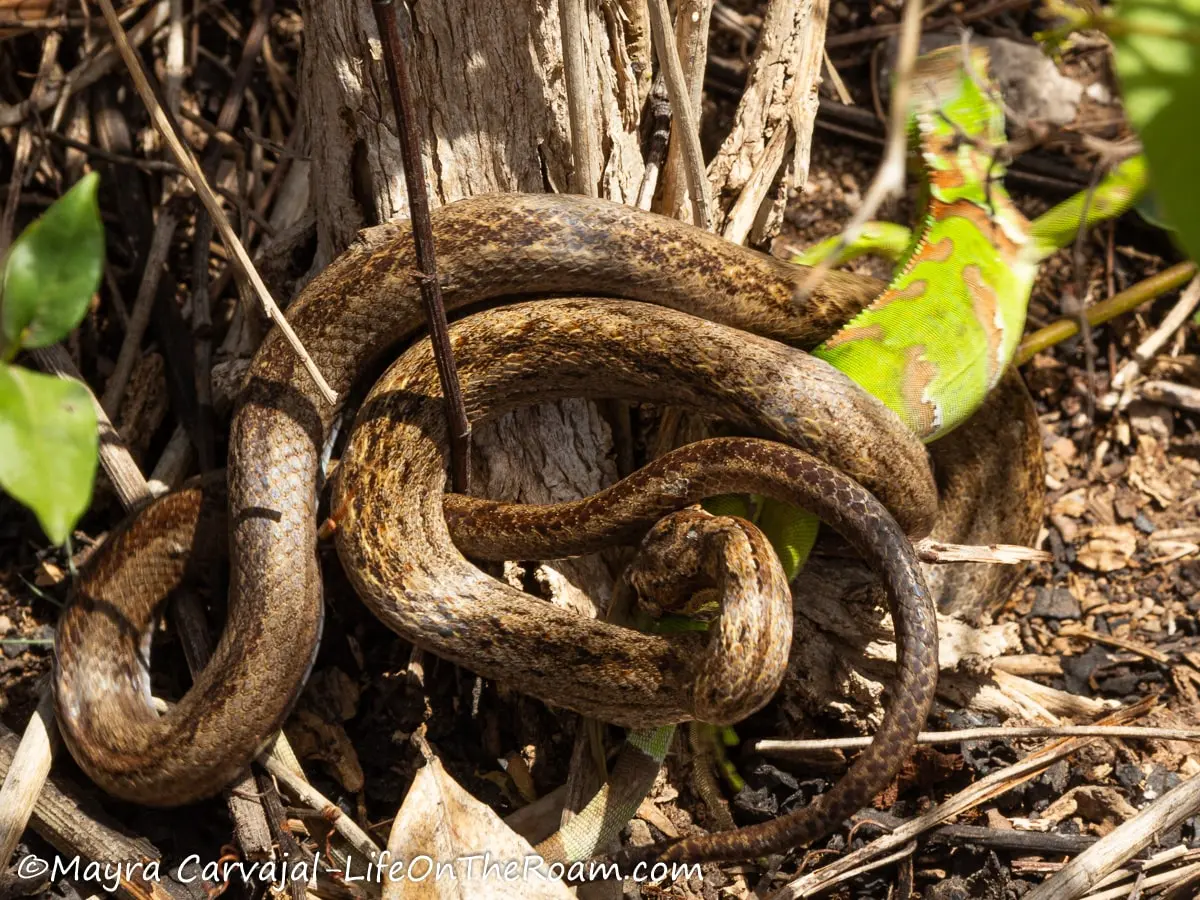
You can also encounter the Red-bellied racer, a harmless snake (unless you’re a small iguana) only found on Saba and Statia, and the Saban Black iguana, endemic to the island.
Saba Breaks the Mold (and Has Quirky Names)
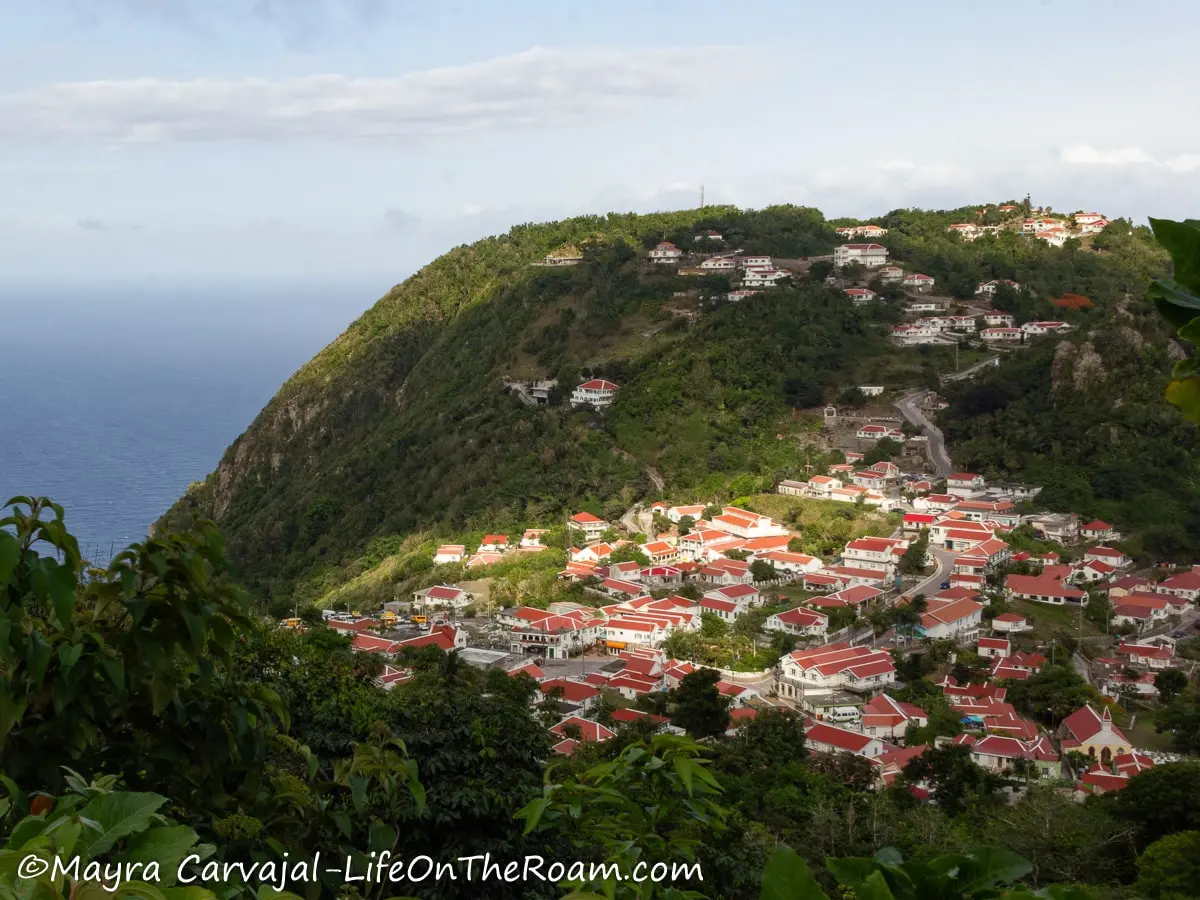
I love that Saba looks and feels like vintage Caribbean, it makes it unique in a sea of islands that want to look like Miami. This is the Caribbean that people remember before the arrival of skyscrapers, KFCs, and huge resorts. You won’t see that here because first, there’s no space.
Second, locals are adamant about preserving the island architectural style and the untouched environment.
The population is spread across picturesque small villages built high up in the hills and valleys. They’re hard to see from the shore, prompting some people to ask, does anyone live on Saba Island? From the boat it doesn’t look like almost 2,000 people call this place home.
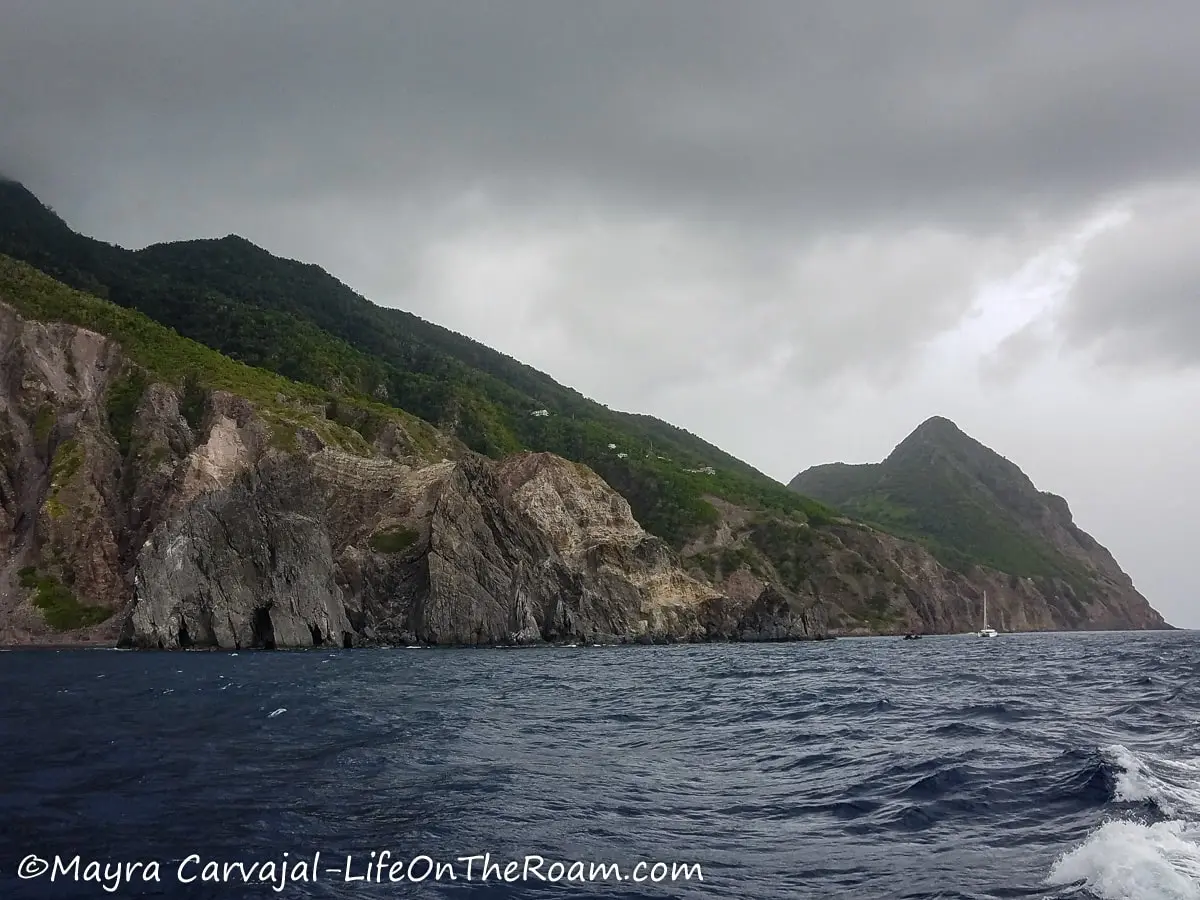
The villages’ names are on the overly simplistic, descriptive side, making it kind of funny.
One of the stories (there’s several) tell that early Sabans built the capital of the island on what they thought was the bottom of the volcano, therefore it’s called: The Bottom.
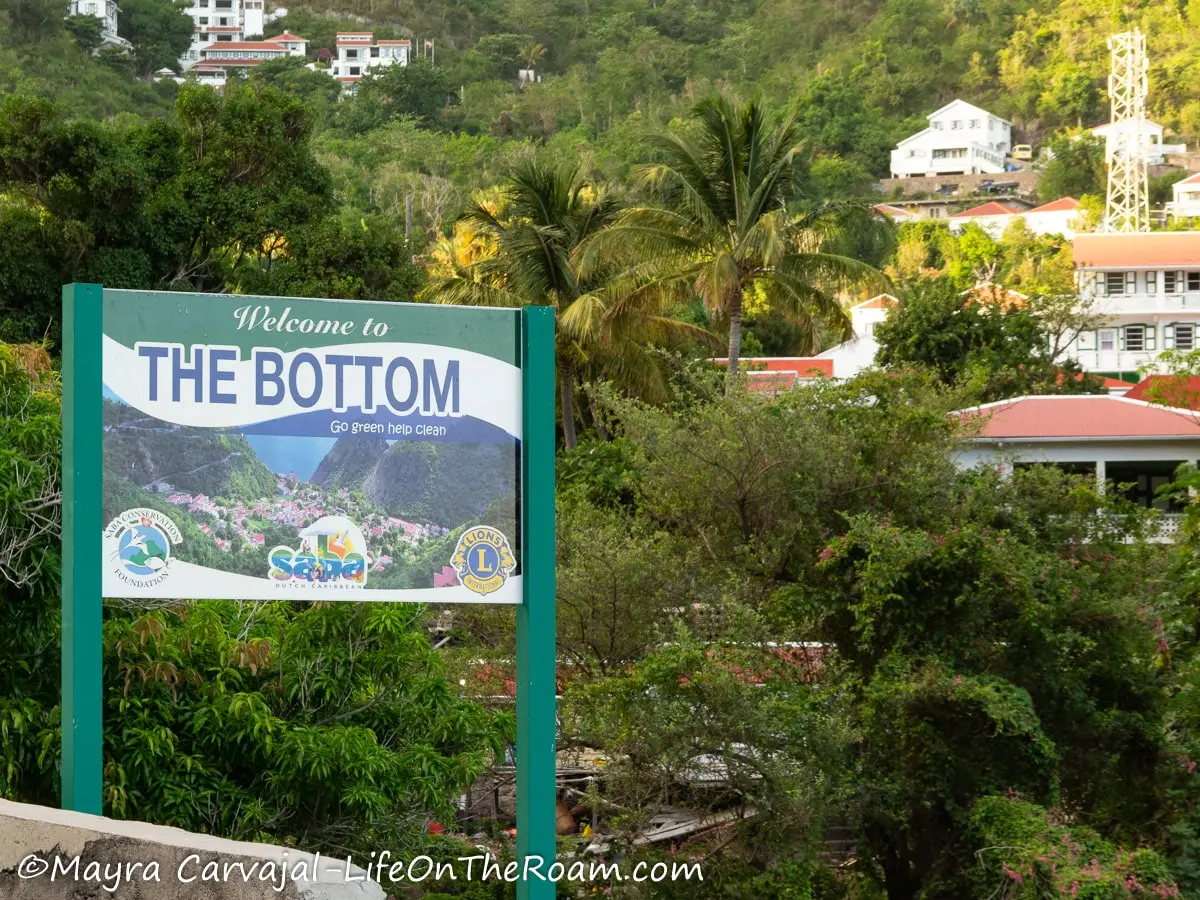
Windwardside, sort of the main village, gets its name from being on the windward side of the island (where the wind blows from the sea).
And then you have Lower Hell’s Gate and Upper Hell’s Gate, or how the locals call it. “Above the hill”.
The church wasn’t too happy with the name, so you’ll also see signs calling it Zion’s Hill.
And the main road is “The Road”.
If you like Caribbean islands with a relaxed vibe you can take a ferry from Saba and visit Nevis.
Saba Is One of the Safest Islands in the Caribbean
If not the world. One of the most shocking (and pleasant) things I learned when I arrived was that most people don’t lock their houses or their cars. The first couple of days it felt weird, but after spending several weeks on Saba, it felt great. It gives you a sense of freedom and total relaxation that is hard to find anywhere else.
Does it mean that nothing ever happens? No. Like any other place inhabited by humans, police sometimes have to deal with fights, some involving weapons and most of them, too much alcohol. But petty theft is rare, and the crime rate is extremely low.
You’ll Enjoy Fantastic Sea Views from Everywhere
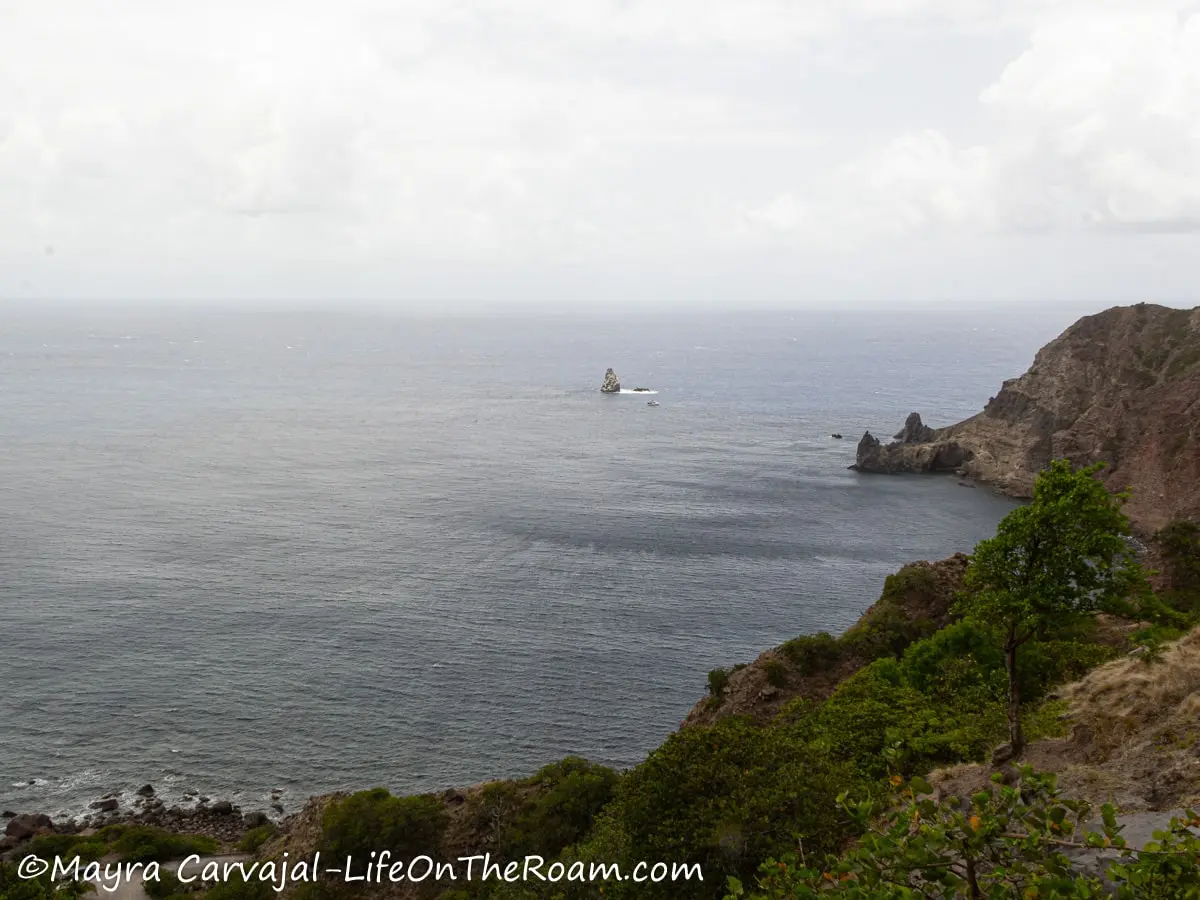
On Saba you don’t have to pay premium fees or go out of the way to have access to fabulous views of the ocean. Thanks to its steep slopes you’ll see it from pretty much everywhere. If you don’t see any, walk five minutes and you’ll see a patch of blue.
This also applies to the hiking trails. Sea view guaranteed (weather permitting) at one point or another.
To be closer to shore you can head to the Flat Point Trail, the Giles Quarter Trail, The Ladder, Spring Bay or Well’s Bay. Trails at higher elevation offer a panoramic view, but you don’t even have to step on them as The Road (Saba’s main road) will treat you to one of the most scenic rides of your life.
You’ll Ride “The Road that Couldn’t Be Built”
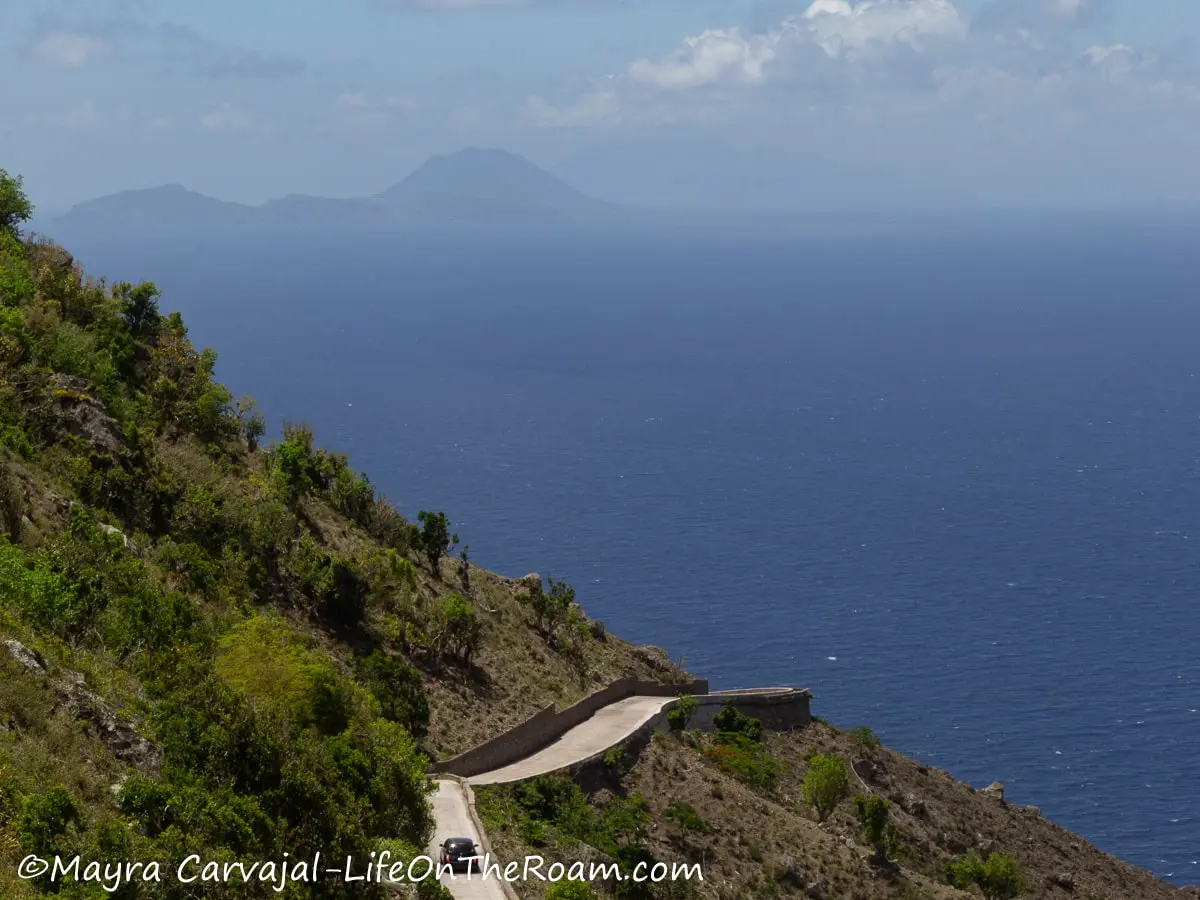
“The Road” – keeping up with the quirky names- is Saba’s main thoroughfare, treating you to unbeatable views.
Every time I drove it I had to say Wow! at least once and make an extra effort to focus and not get too distracted with the scenery. Especially when the lanes are on the narrow side and you have to deal with hairpin turns and steep grades. It’s fun, though.
Whether you enjoy it as a driver or, in a more relaxed manner as a passenger on a taxi, you’ll be riding on a testament of Sabans’ determination.
After completion of a road from Fort Bay (the port where you arrive by boat) to The Bottom in 1943, Sabans wanted to catch up with the rest of the world and use cars instead of hiking and relying on donkeys to travel between the villages. Tired of waiting for the Dutch government to build a road and hearing the No way, it’s too steep! excuse, they decided to roll up their sleeves and do it themselves.
History tells us that Sabans didn’t sit and wait for someone to solve their problems.
So Joseph “Lambee” Hassell took an engineering course by mail to design “The Road”. He put together a team who built the one road running on the south side of the island, and a few side roads, to connect all villages and the airport.
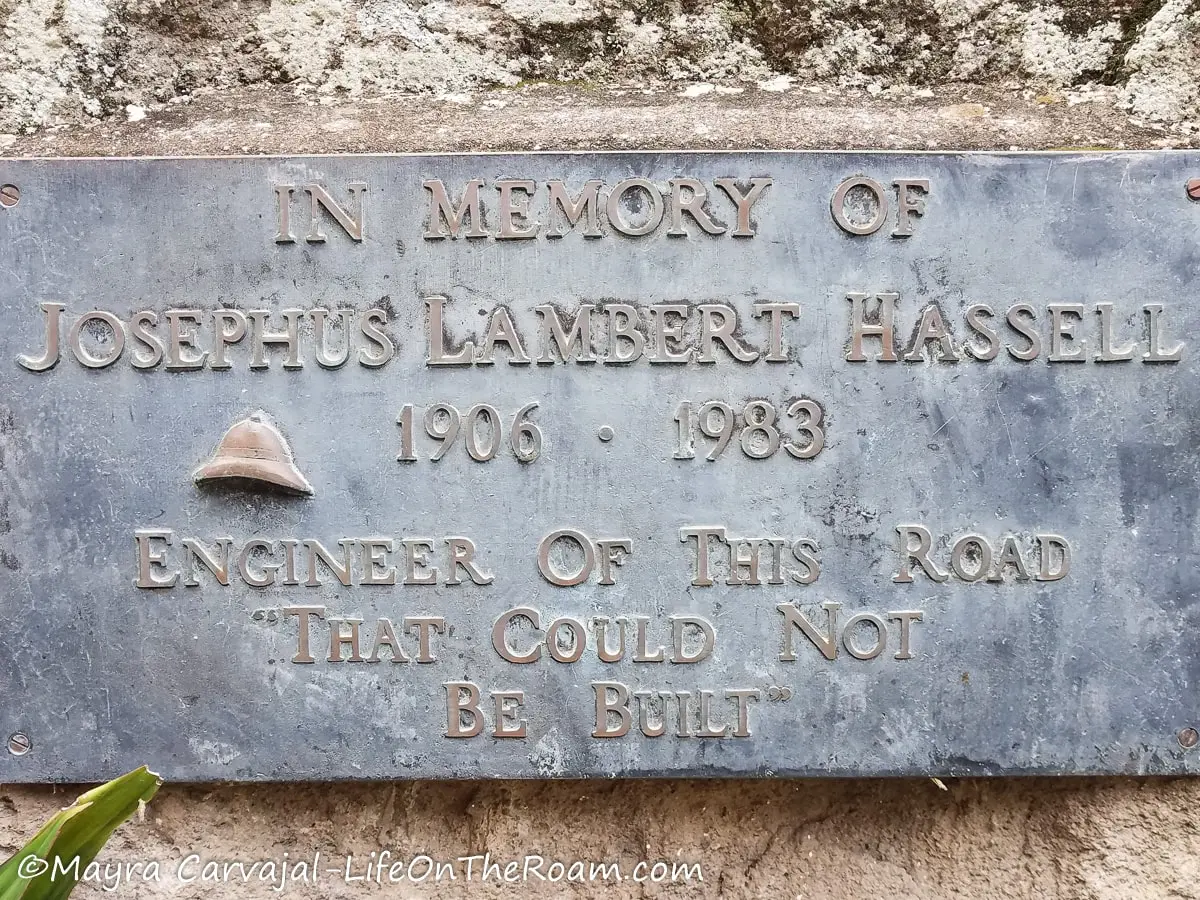
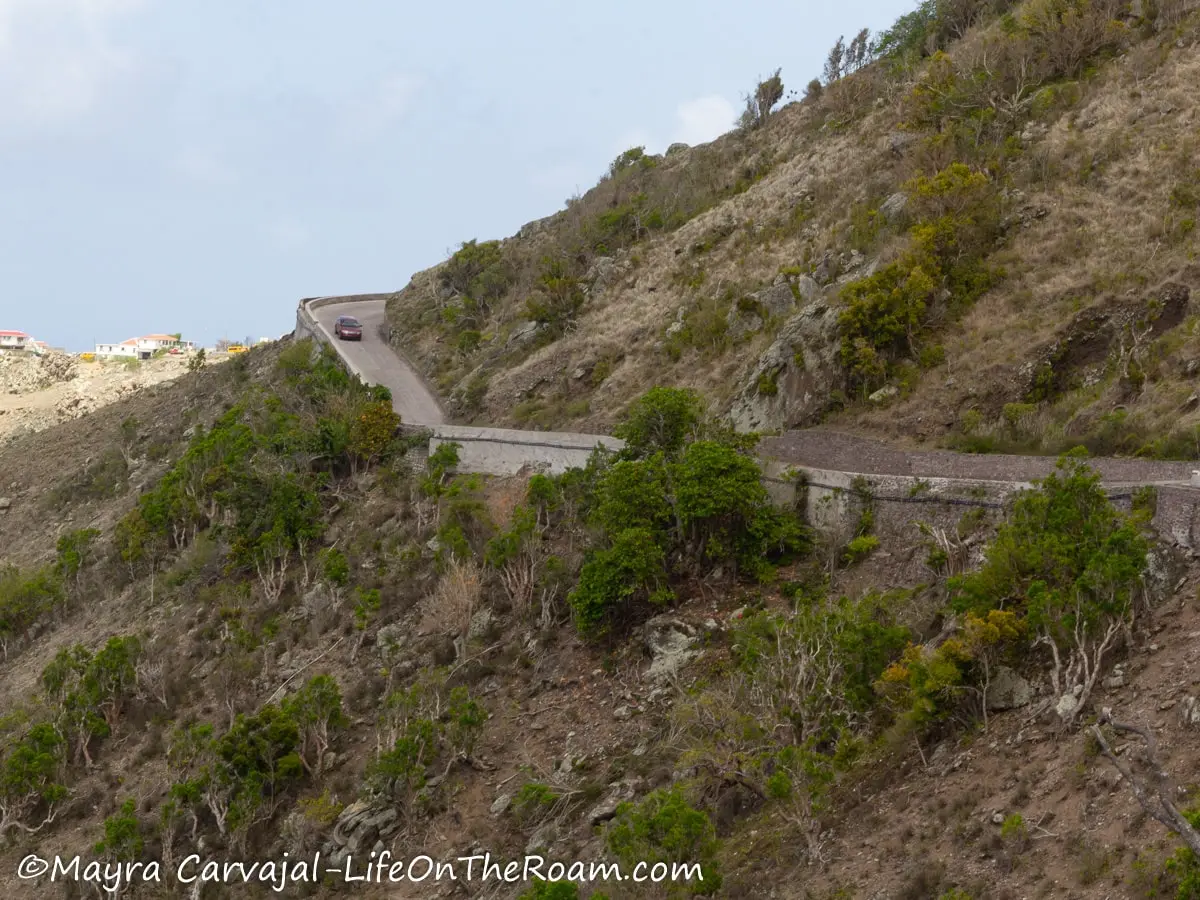
Most of it was built by hand, an endeavour that took more than 20 years.
It’s the same road that is used today, and it’s in excellent condition.
You’ll Ascend to the Highest Point in the Dutch Kingdom
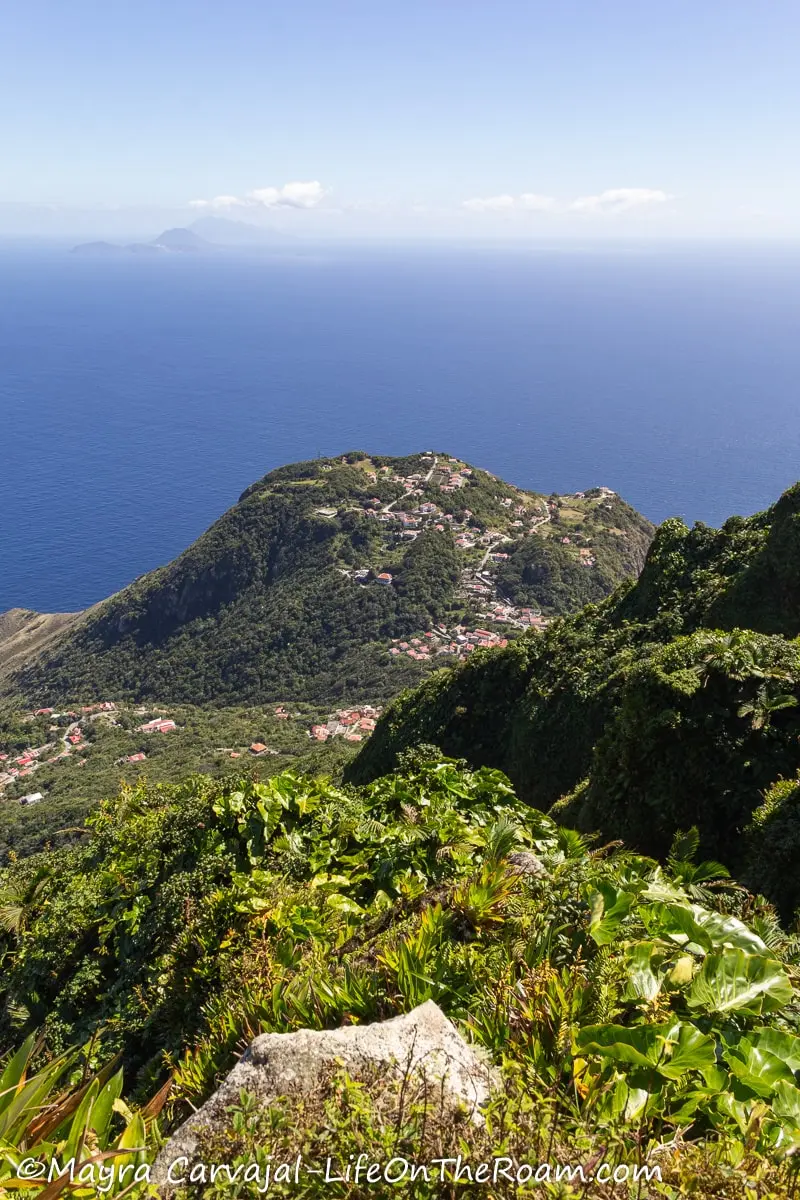
Yes, right here in the Caribbean, not in Europe.
Saba is part of the Kingdom of the Netherlands and Mount Scenery, the tip of the dormant volcano that formed the island, is its highest elevation.
The view is superb, but the gods of all misty things may decide not to grant you permission to see it as it’s often surrounded by the top cloud you see in most pictures of Saba.
Don’t let that deter you, though. The trail is beautiful and the clouds may clear when you get there.
You’ll Land in the Shortest Commercial Runway in the World
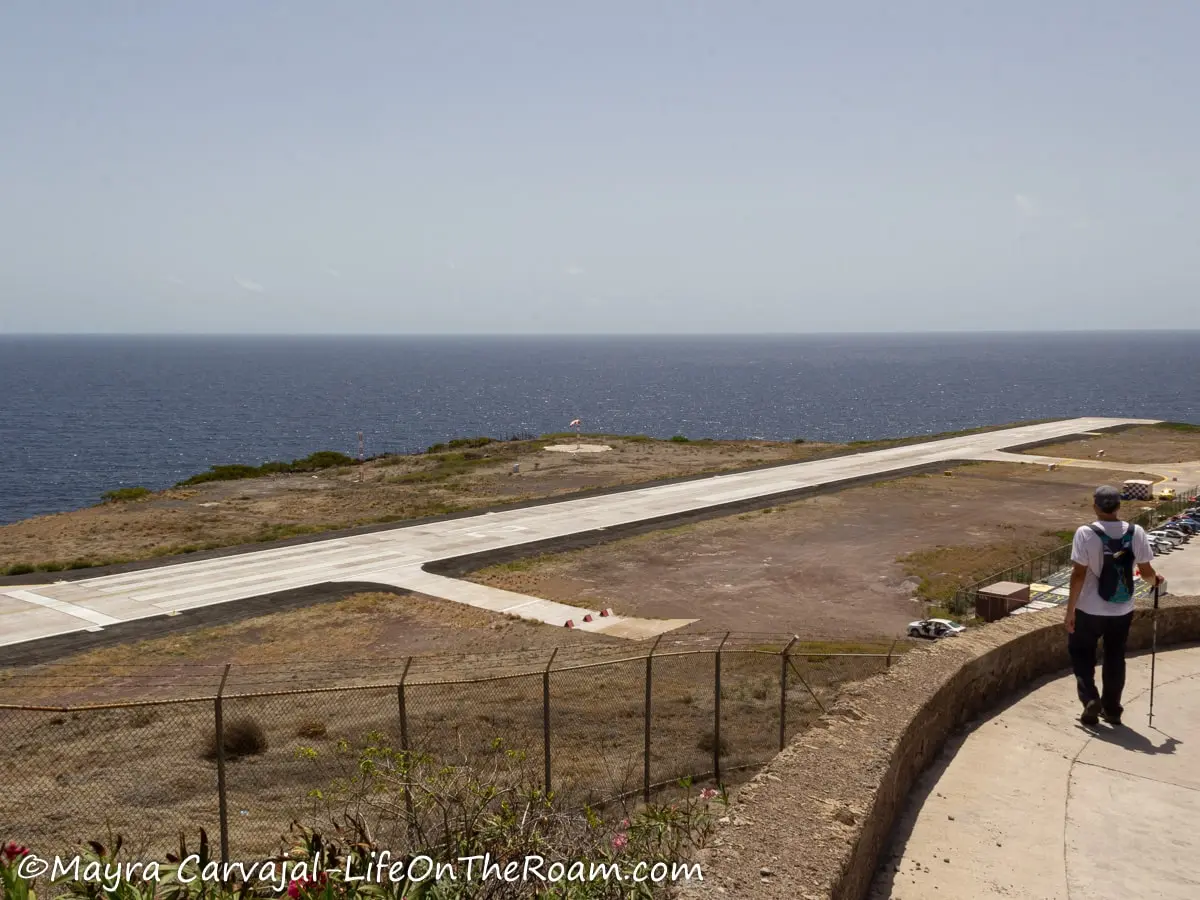
Any aviation geeks in the house?
This is your chance to fly to Saba and land on the world’s shortest commercial runway.
I found it interesting that the first flight to Saba, departing from St. Barth, landed in 1959 on an improvised runway. A dirt strip at Flat Point, cleared of rocks. It was an exercise of “See, we told you it can be done!”
Construction of the Juancho E. Yrausquin airport started right after, opening its doors in 1963.
To learn more about the scenic short flight check my blog post about how to get to Saba.
Saba’s History Is Fascinating (And You Can Still Hear It From People Who Lived It)
I stand in awe when I hear how Sabans dealt with the hardships of living here in the mid 20th century and before, prior to the late arrival of modern technology.
And what I like even more is that you can still talk to people who actually lived through those times, in part because Saba’s location and topography played a part in delaying the island’s modernization.
After all, it wasn’t until December 24th, 1970 that electricity was on 24/7.
There wasn’t a pier until 1972 and the first car hit the road in 1947.
I was talking with one of the locals who was a little kid when the test flight from St. Barth landed. He recalled that everybody was excited and as soon as the plane touched the ground they were all covered in dirt from head to toe.
I met Mr. Barnes while hiking one of the trails. He told me how he carried stones over his head when he was a young boy to help mark the paths that connected the villages. This was before the construction of The Road, when the hiking trails of today were the only roads and tamarind trees marked the junctions.
Who knows what stories you can hear when you visit.
How Many Days Do You Need in Saba Island?
I recommend spending a minimum of three days on Saba, ideally five to seven days if you want to enjoy all this paradise has to offer: 31 diving sites, snorkeling, many hiking trails, arts and crafts, restaurants, and some serious relaxation.
Short on time but want to catch a glimpse of Saba?
Check out this day trip to Saba from Sint Maarten, which includes transportation, lunch, and a self-guided hike, or a tour around the island, or scuba diving.
How Do You Get Around Saba
Most visitors use taxis (which are usually vans) to get around Saba as there’s no public transportation.
For the phone number of the taxis available and the standard rates click here.
You can also rent a car if you want more flexibility, but be aware of parking limitations.
Do You Need a Car in Saba?
If you’re staying in Windwardside you can get away without a car. Within walking distance there’s two supermarkets, cafes, restaurants, stores, and you’ll be near the trailhead of several hiking trails.
You can either take a taxi or rent a car if you want to explore further.
Can You Walk Around Saba?
You can walk around Saba villages, but be prepared for hilly streets and wear shoes with good traction.
I wouldn’t walk on The Road between The Bottom and Windwardside as it’s narrow, there are no sidewalks, and there’s only a low wall acting as a barrier between the winding road and the precipice.
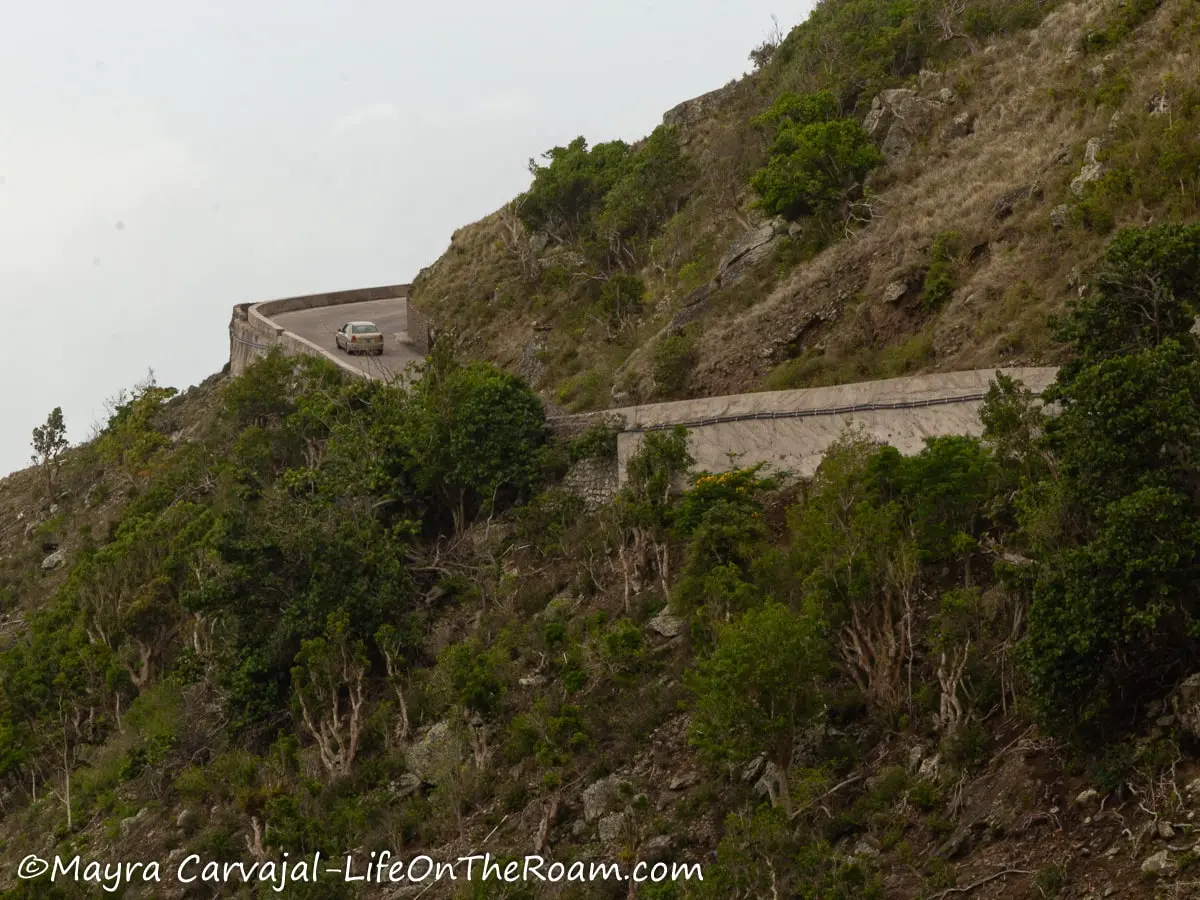
I wouldn’t walk on the road between The Bottom and Fort Bay either.
If you want to go between Windwardside and The Bottom on foot, do it as Sabans did in the past: hit the hiking trails.
Some Fun Facts About Saba
- Even though Saba is a special municipality of The Netherlands, English is the main language. Most Sabans are descendants from early settlers coming from Ireland and Scotland. You’ll see Dutch signs in the government buildings at The Bottom (it’s the official language and it’s taught at school along English). You’ll also hear Spanish.
- The currency is the American Dollar.
- There is only one gas station (at Fort Bay), and it’s closed on Sundays.
- There are no big supermarkets, but the two small supermarkets at Windwardside and the two at The Bottom had all I needed, including ice cream that costs an arm and two legs. There’s also a hydroponic farm.
- A school of medicine opened on Saba in 1992, in case you want to go to med school in paradise.
Beyond the natural wonders and the adventures you may enjoy, visiting this island will make you feel that you discovered a hidden treasure.
I have a love affair with Saba. For all the reasons I list above and for a precious little girl named Shui.
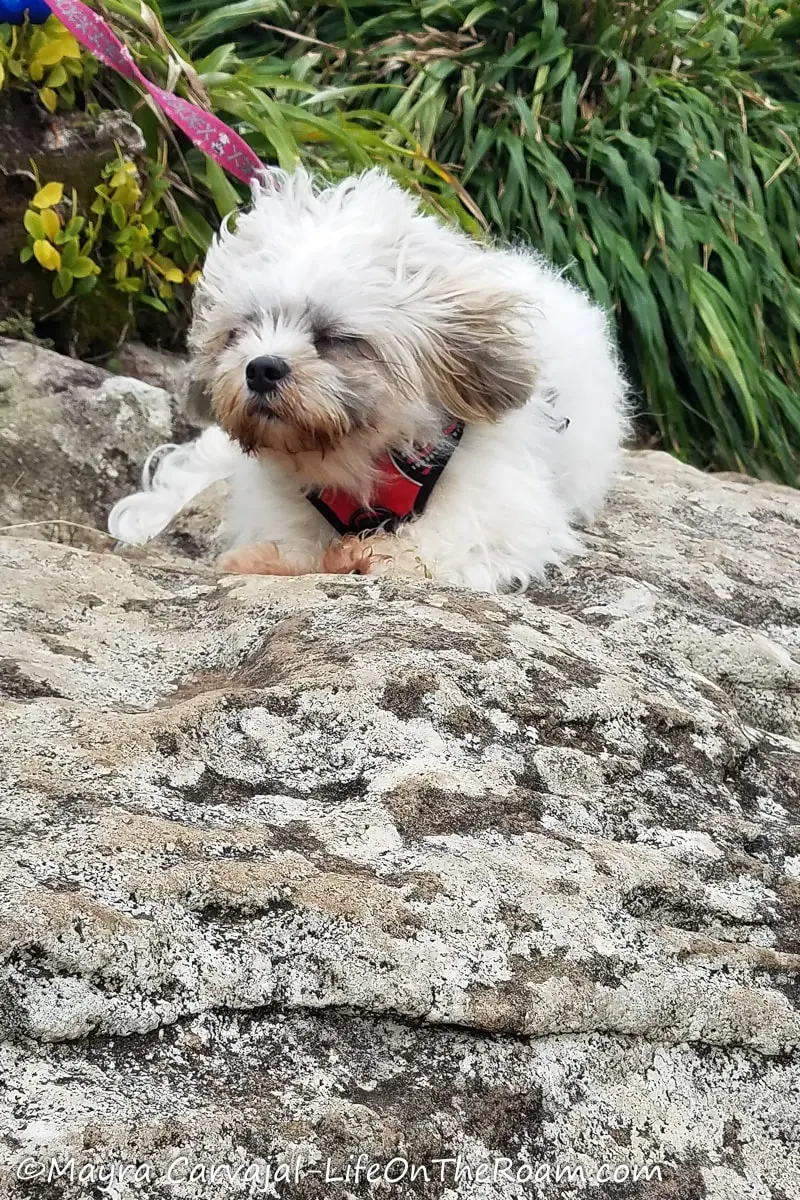
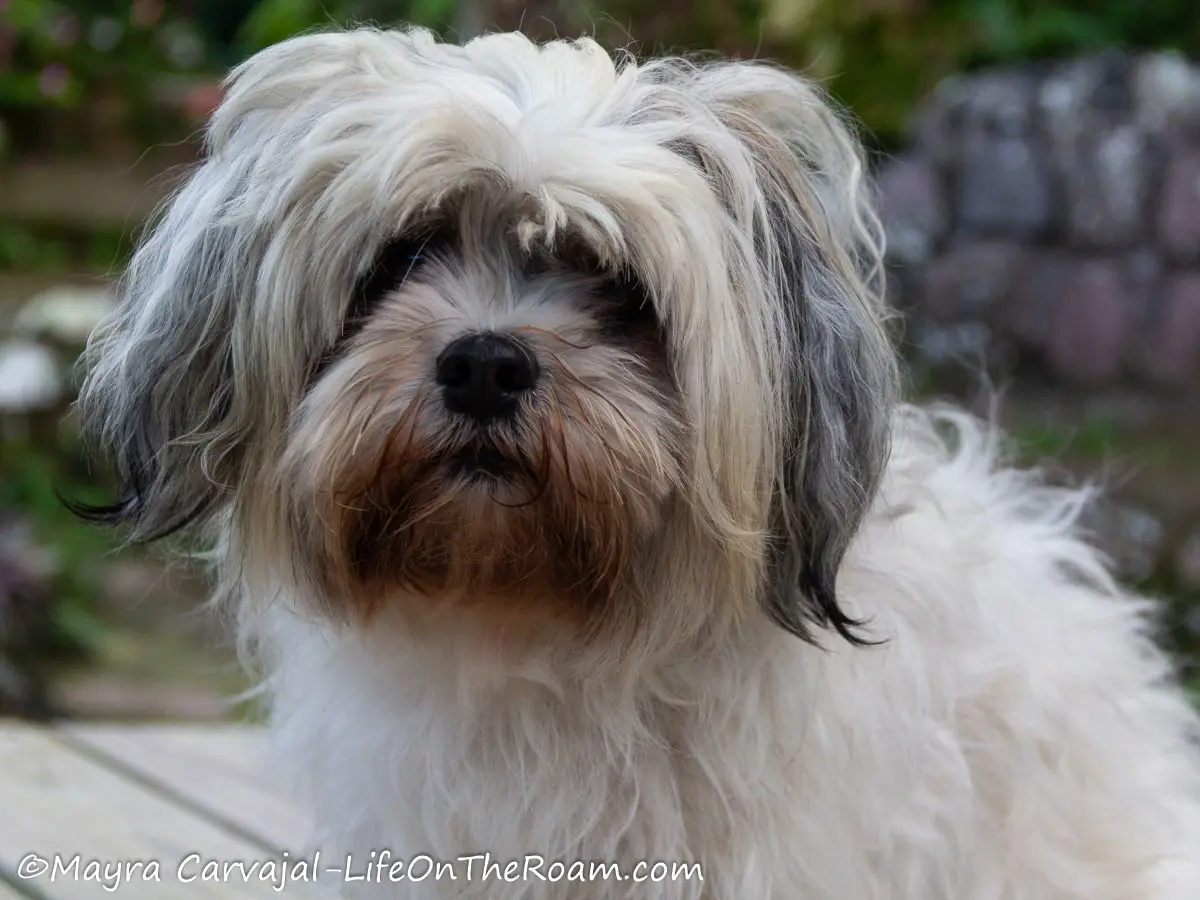
YOU MAY ALSO WANT TO READ
BOOKING FLIGHTS AND ACCOMMODATIONS
Book your flight without losing your shirt
We check Momondo to find great deals to book our flights. Also, check Great Escape: it combines the listings from Expedia, Kiwi, Kayak, (and Skyscanner on the premium service) to find the best airfares.
To find a place to stay for less
Booking.com: this site combines everything under the sun. You’ll find hotels, apartments, B&B, hostels, rooms, etc., with all sort of filters to make your search a breeze.
Hotwire: the first site I check when we plan to stay at a hotel for a few nights. You can save anything from 20% to 60%. Use the search filter to find what you want and you’ll end up with three listings that match your criteria. You’ll know which one you’ll get after you book. If you can handle a little bit of uncertainty you can score big savings.
House Sitting: you take care of people’s pets and house for free while staying for free. It’s the closest thing to experiencing a place “like a local”. But it comes with responsibilities… Are you an animal lover? It may become your new way to travel.
To get travel insurance
SafetyWing: travel medical insurance that gives us peace of mind knowing that we’re covered in case of emergency. It’s convenient, affordable, and suitable for digital nomads who spend a long time outside their home country.
Check the full list of travel resources on my Resource Page for more options and savings
